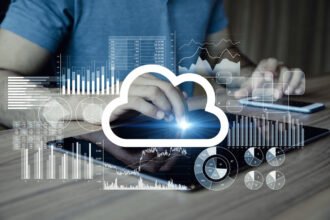The use of data is substantially changing most industries and practices across the world these days, but none perhaps more than the health care sector. In recent years, pharmaceutical companies, hospitals, private practices, payment processing providers, and others have been able to accumulate and exchange information more easily than ever. This in turn is having an impact on a variety of areas within the industry, from patient care through to billing.
If you’re keen to learn more, read on for the lowdown on some of the ways in which big data is transforming the health care industry today.
Employment
The use of big data in the health care sector is changing the way that many current jobs are performed, as well as opening up new areas of employment. As an example, there is now a growing need for workers who are qualified in the area of health care data collection and analysis.
People who have studied a graduate degree in spatial analysis or other geographic information systems (GIS) can apply their knowledge to collect, map, and interpret information that can be used to test and refine hypotheses in the public health sector.
Applications of spatial analysis in public health include things like:
- Mapping the risk of infectious diseases
- Identifying and evaluating possible cancer clusters
- Providing tools for the assessment of air pollution exposure
- Make links between environmental conditions, or a person’s access to care and nutritious food, and changes in health
Preventative Health
Data is also of great use when it comes to preventative health, and can be implemented in many ways. For example, with the availability of smartphones and the applications made for them, patients can now use mobile technology to live healthier lifestyles and for longer.
Apps can be used to measure how far people walk in a day, or how many calories they burn or exercises they complete. Digital systems can make it easier for people to eat a healthier diet, and to monitor their blood pressure, weight, heart rate, sleeping patterns, insulin levels, and more.
Such data can then be tracked, compiled, analyzed against the results of others, and sent to doctors and other practitioners for monitoring. The information can be used to glean a comprehensive picture of an individual patient’s current health and risk factors. This, in turn, makes it easier for workers to diagnose ailments, and to draw up a tailored health care plan.
Predictive modeling can take place too, in order to identify patterns or potential issues that emerge during comparison of one person’s medical files against thousands of other patients with the same genetic factors, condition, and/or lifestyle. This will help doctors to see the likely results of the treatment options they are thinking about prescribing.
The overall database of information that researchers now have available to them on the state of the health of the general public also makes it much easier for analysis. It is now much simpler to identify growing issues, to predict problems before they occur, and to prepare remedies (both educational and medicinal) in advance.
In addition, Apple and IBM, two of the largest tech companies in the world, are collaborating on a big-data health platform that will be used to crunch real-time biometric and activity data from millions of potential users. Apple Watch and iPhone owners will be able to share data to a cloud health care analytics service developed by IBM, which will then be used to discover a variety of medical insights.
 Patient Care
Patient Care
Patient care is, of course, another area where big data is really transforming the health care sector. For starters, physicians are moving more and more toward evidence-based medicine when diagnosing and treating patients. This is done through the regular and close examination of clinical data for decision-making.
More robust evidence is available than ever before. Now, individual patient data sets can be aggregated into big-data algorithms which can pick up nuances in subpopulations — nuances that are typically not so apparent in small samples.
In addition, the way in which patients visit and interact with physicians is beginning to change because of the plethora of data available. Telemedicine (where people can receive a diagnosis and treatment plan remotely, via Skye or other computer-based interactions) has become much more common. Patients can now stay in the comfort of their own home or other location while still taking advantage of a one-on-one service from their preferred health care professional. In addition to this, for practices that want to collect more patient feedback, utilizing digital tools and platforms can be an effective way to enhance patient interaction and satisfaction.
Clinical trials are also being affected by the availability of big data. Researchers can now use the huge amount of data they have access to in order to choose the best subjects for their trials. The sharing of data between pharmaceutical companies is also leading to breakthroughs, with discoveries that some medications can actually treat a wider variety of conditions than previously believed.







